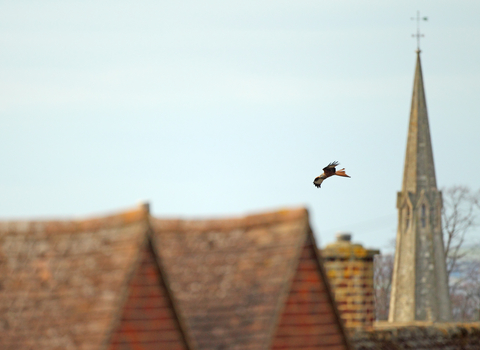The previous blog in our short series on these reforms highlighted some compelling examples of developments which have enhanced nature and access to green spaces. Sadly, not all developments bring the tremendous positives – like increased biodiversity, improved access to nature, proper engagement with local people – as they did.
We have long believed that planning should promote the stewardship and improvement of our natural environment. It’s fair to say that’s not what’s happening across the board, but our assessment of the changes put forward finds this will not come to pass. Place-making must intentionally support nature’s recovery – there is too much at stake to leave this to ill-informed algorithms, which is one of the proposals.
We have three key concerns about the proposed changes:
Increasing nature’s decline
The Planning White Paper puts forward a data-driven approach to categorising areas as Growth, Renewal or Protected. However, it appears that site surveys may not be carried out before zoning takes place – thanks to an assumption that all the necessary data to inform the zoning is already to hand. But this is simply not the case, and unfortunately we have no confidence that adequate, up to date and detailed data will be provided to prevent substantial damage and loss of nature. Imagine a scenario in which an un-surveyed site teems with wildlife, but nobody knows and so the Local Plan recommendation is to ‘build here’… A worrying and likely possibility if these reforms go ahead unchanged.
Failing to integrate nature into people’s lives
It is widely-recognised that access to green spaces is essential for our health and wellbeing. Our experience of lockdown this year has emphasised more starkly than ever before how much comfort can be drawn from having nature on our doorsteps. But of course, not all of us do have nature on our doorsteps – and under the proposals, this could actually worsen. There is no suggestion of including nature, or accessible natural green spaces, in the Renewal areas – places where people already live, deemed suitable for ‘gentle densification’. In fact, existing nature-rich green spaces could be lost to this densification, and those that remain will come under increased recreational pressure.
Undermining local democracy
Under the reforms the preparation of the Local Plan is generally the first – and now could be the only - point at which people can influence development in their neighbourhood. The opportunity for people and organisations like The Wildlife Trusts to comment on specific developments will be gone. Imagine a scenario in which endangered wildlife is discovered at a site that was allocated in the local plan several years earlier, land which a developer intends to build on. You want to object to their plans, but there isn’t a mechanism to do so – your chance to comment has already been and gone at the local plan stage, before you even knew the details of the site.
So, how might these concerns play out? Consider Chorlton Moss Local Wildlife Site, in Staffordshire...
Chorlton Moss Local Wildlife Site
At the end of 2016, an application was submitted for almost 100 new houses on the edge of Chorlton Moss Local Wildlife Site, a lowland raised bog. This is an irreplaceable habitat and listed on Annex 1 of the Habitats Directive. However the site hadn't been re-surveyed for many years, and the boundary didn't include a wide buffer to protect surrounding habitats or the site's water sources. The proposals included a drainage pond within the moss, and even injecting cement into the peat below the development site to stabilize it. This would have destroyed habitats, affected the ground water supply to the moss, and prevented future restoration of the area.
Through the surveys undertaken for the planning application, it became clear that the area proposed for the housing was itself a rare wet meadow habitat that is very valuable for nature; a wetland expert found many valuable plant species in these fields. Consequently, this land was eventually designated and added to the Local Wildlife Site. Thankfully, expert ecology evidence, alongside action from local resident groups, ensured that the real impact was highlighted and a subsequent planning appeal by the developers was ultimately withdrawn.
The Chorlton Moss case demonstrates both how a lack of data and expert advice for planners could lead to poor decisions, and how important it is for local voices to be heard.
Now that you’ve read about what we stand to lose, please take our campaign action, and make your voice heard in the consultation. Don’t miss out on your opportunity to have your say; there’s not much time left!


